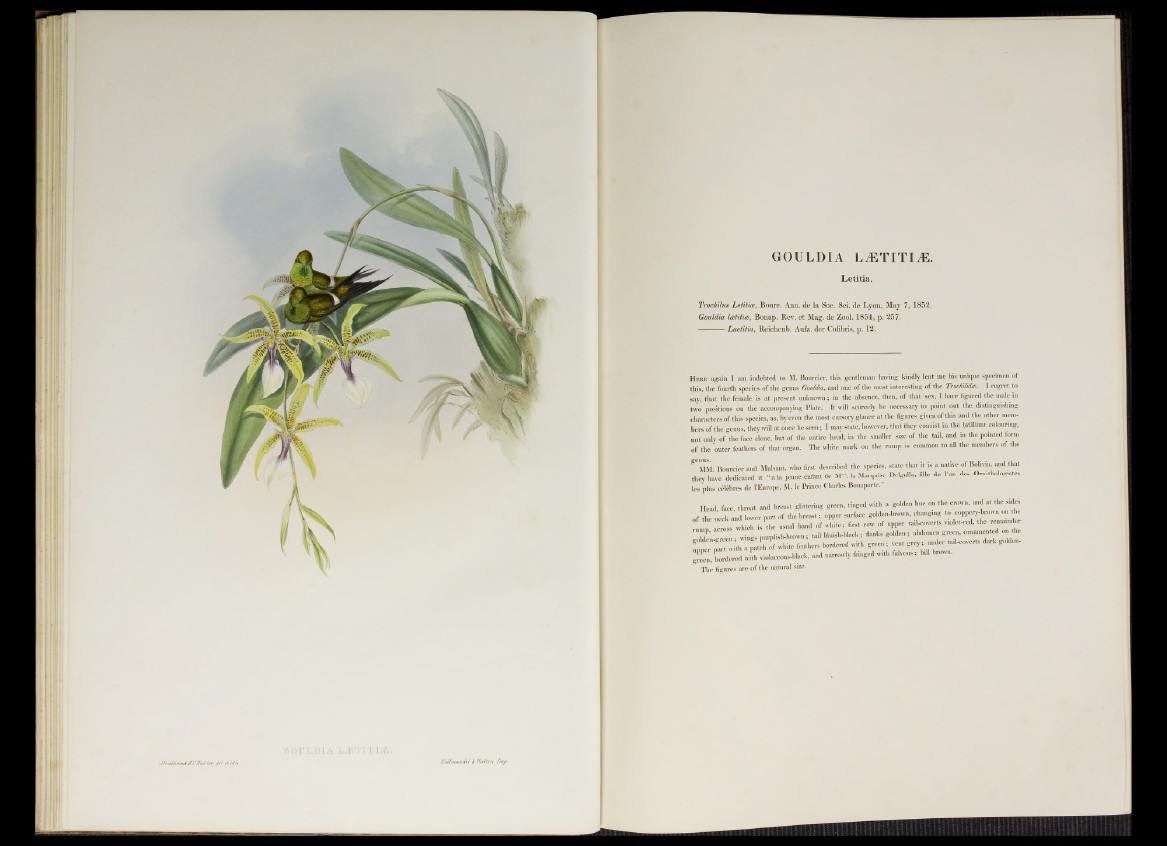
J ftmM and//.CJlif/iiff. Ht/ d Ulh JM Jn u rn d fl A W allen. Im p
GOULDIA LÆTITIÆ.
Letitia.
Trochilus L e titia ,.Bourc. Ann. de la Soc. Sci. de Lyon, May 7, 1852.
Gouldia loetitioe, Bonap. Rev. et Mag. de Zool. 1854, p. 257.
-----------Laetitia, Reichenb. Aufz. der Colibris, p. 12.
Here again I am indebted to M. Bourcier, this gentleman having kindly lent me his unique specimen of
this, the fourth species of the genus Gouldia, and one of the most interesting of the Trochilidoe. I regret to
say, that the female is at present unknown ; in the absence, then, of that sex, I have figured the male in
two positions on the accompanying Plate. It will scarcely be necessary to point out the distinguishing
characters of this species, as, by even the most cursory glance at the figures given of this and the other members
of the genus, they will at once be seen ; I may state, however, that they consist in the brilliant colouring,
not only of the face alone, but of the entire head, in the smaller size of the tail, and in the pointed form
of the outer feathers of that organ. The white mark on the rump is common to all the members of the
gC MM Bourcier and Mulsant, who first described the species, state that it is a native of Bolivia, and that
they have dedicated it “ àia jeune enfant de M” . la Marquise Delgallo, fille de l'un des Ornithologistes
les plus célèbres de l'Europe, M. le Prince Charles Bonaparte."
Head fece, throat and breast glittering green, tinged with a golden hue on the crown, and at the sides
r .1 ’.cl, and lower nart of the breast ; upper surface golden-brown, changing to coppery-brown on the
of the neck a p ^ ^ rf tail.coverts violet-red, the remainder
with a it c h of white feathers bordered with green ; vent grey ; under tail-coverts dark golden-
green, C de red with violaceous-black, and narrowly fringed with folvous ; bill brown.
The figures are of the natural size.